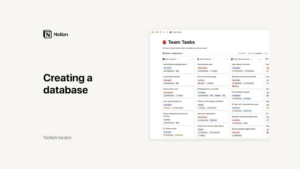Lesson 6: Google My Business
LOCAL SEO BEST PRACTICES
Introduction
In this lesson, we will explore best practices for local SEO (Search Engine Optimization) to help your business appear more prominently in local search results. Local SEO is essential for businesses that operate in specific geographic areas and want to attract nearby customers. This lesson will cover key strategies, including optimizing your Google My Business (GMB) profile, managing online reviews, building local citations, and creating localized content.
OPTIMIZING YOUR GOOGLE MY BUSINESS PROFILE
Complete and Accurate Information
Ensure all information on your GMB profile is complete and accurate. This includes your business name, address, phone number, website URL, business hours, and categories. Consistency across all online platforms is crucial.
Regular Updates
Regularly update your GMB profile with new photos, posts, and updates about your business. Active profiles are favored by Google and are more likely to appear in search results.
Utilize Keywords
Incorporate relevant keywords naturally in your business description, services, and posts. This helps Google understand what your business is about and match it to relevant search queries.
MANAGING ONLINE REVIEWS
Encourage Customer Reviews
Ask satisfied customers to leave reviews on your GMB profile. Positive reviews enhance your business’s credibility and improve your local search ranking.
Respond to Reviews
Respond to all reviews, both positive and negative. Thank customers for positive reviews and address any issues raised in negative reviews professionally and promptly. This shows that you value customer feedback and are committed to improving their experience.
BUILDING LOCAL CITATIONS
Consistent NAP (Name, Address, Phone Number)
Ensure your NAP information is consistent across all online directories, social media profiles, and your website. Inconsistencies can confuse search engines and lower your ranking.
Submit to Local Directories
Submit your business information to local directories, such as Yelp, Yellow Pages, and industry-specific directories. These citations help search engines verify your business’s existence and relevance.
Use Structured Data Markup
Implement structured data markup (schema) on your website to help search engines better understand your business information. This can improve your chances of appearing in local search results.
CREATING LOCALIZED CONTENT
Local Keywords
Conduct keyword research to identify local search terms relevant to your business. Incorporate these keywords naturally into your website content, blog posts, and social media updates.
Content About Local Events and News
Create content related to local events, news, or activities. This not only helps with SEO but also engages your local audience and establishes your business as part of the community.
Location Pages
If your business has multiple locations, create separate location pages for each one. Each page should include unique content specific to that location, such as address, contact information, business hours, and localized keywords.
LEVERAGING SOCIAL MEDIA FOR LOCAL SEO
Engage with Local Community
Use social media platforms to engage with your local community. Share updates about local events, respond to comments, and participate in local discussions.
Share User-Generated Content
Encourage customers to share their experiences and tag your business on social media. Share this user-generated content on your profiles to build community trust and attract more local customers.
Local Hashtags
Use local hashtags in your social media posts to increase visibility among local audiences. This can help you reach more potential customers in your area.
MONITORING AND ANALYZING PERFORMANCE
Use Google Analytics
Use Google Analytics to track your website’s traffic and see how much of it comes from local searches. Analyze this data to understand what’s working and where you can improve.
Monitor GMB Insights
Regularly check GMB Insights to track how customers find your profile and what actions they take. Use this data to refine your local SEO strategy.
Adjust Based on Feedback
Continuously adjust your local SEO efforts based on feedback and performance data. Stay updated with the latest SEO trends and algorithm changes to maintain your ranking.
CONCLUSION
Implementing local SEO best practices is essential for improving your business’s visibility in local search results and attracting more customers from your area. By optimizing your GMB profile, managing online reviews, building local citations, creating localized content, leveraging social media, and continuously monitoring your performance, you can enhance your online presence and drive business growth. In the next lesson, we will discuss common GMB mistakes and how to avoid them.
Credits: this video is available on the YouTube channel WsCube Tech









